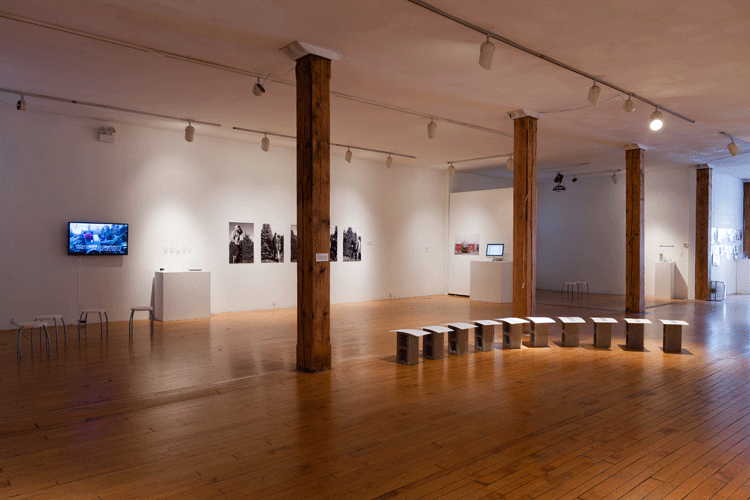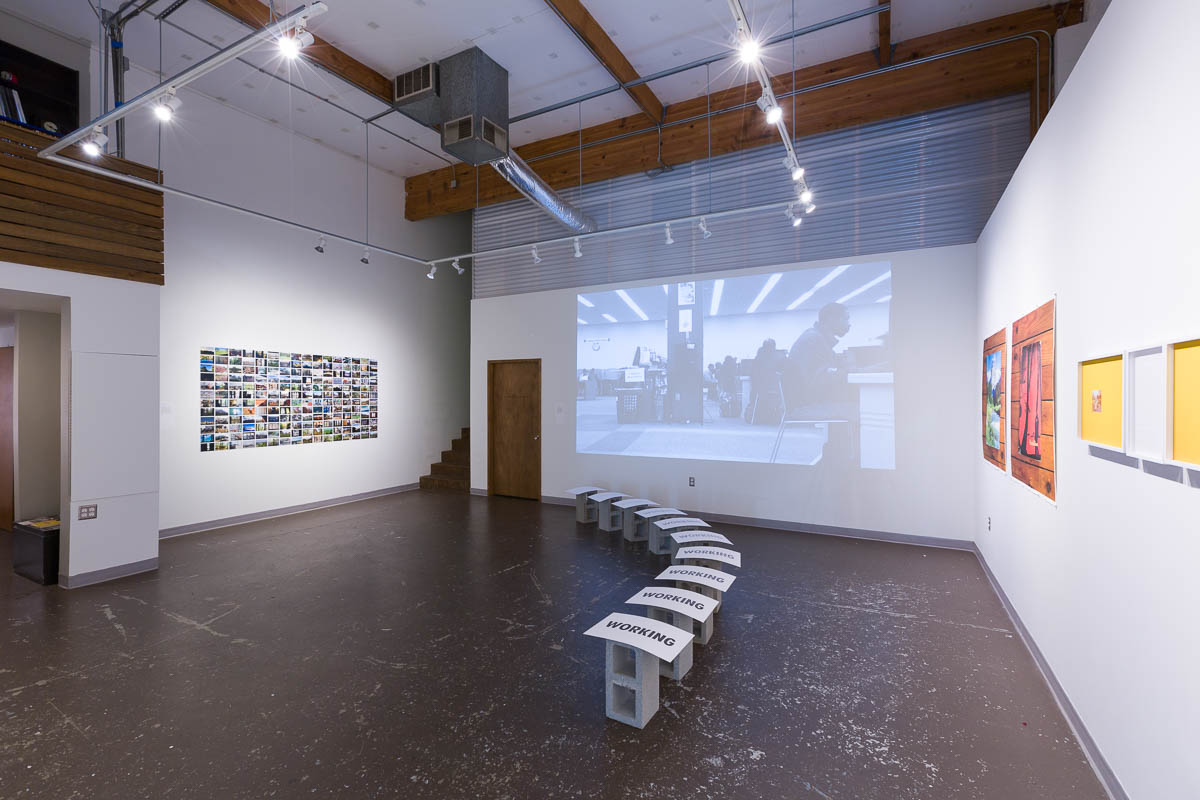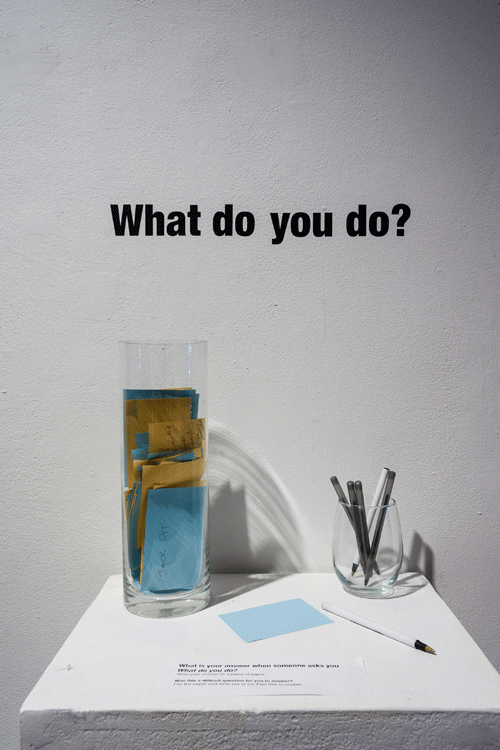HIDDEN ASSEMBLY: Labor in Contemporary Culture
August 26 - October 21, 2016 | SPACES, Celevland, OH
November 3, 2016 - January 7, 2017 | Pacific Northwest College of Art & Newspace Center for Photography, Portland, OR
Artists & Projects:
In Cleveland: Art Handlers Alliance (AHA-NY) | João Enxuto & Erica Love | Anna Gray & Ryan Wilson Paulsen | Gulf Labor Coalition | Betty Marin | Huong Ngo & Hong-An Truong | Laurel Ptak | Studio REV- (lead artist: Marisa Morán Jahn) | Andrew Norman Wilson
In Portland: Art Handlers’ Alliance of New York (AHA-NY) | João Enxuto & Erica Love | Anna Gray & Ryan Wilson Paulsen | Gulf Labor Coalition | Marisa Morán Jahn/Studio REV- | Mary Lum | Michael Mandiberg | Betty Marin | Huong Ngo & Hong-An Truong | Laurel Ptak | Patricia Vázquez with Luciano Aioli, José González, and Eligio Mendoza | Andrew Norman Wilson
Overview:
The starting point of Hidden Assembly is the recognition that under capitalism most production is rendered invisible. The labor that people perform is obscured or eliminated–an effect heightened by the expanded tech field, global outsourcing, and the rise of precarious work. The group exhibition Hidden Assembly addresses our reconfigured labor market by featuring projects that examine what it means to work in current times, and creative campaigns geared towards exposing exploitative conditions that precarious laborers face today from cultural workers to caretakers to independent contractors.
The projects address some of the following topics: invisible laborers that the digital “revolution” has specifically produced, artists who track and foreground individual workers, and creative campaigns geared towards exposing the highly exploitative conditions that precarious laborers face today from adjuncts to caretakers to independent contractors. Hidden Assembly foregrounds the work and conditions of those who produce and contribute to our material and cognitive worlds, and in so doing modestly attempts to resist their systemic erasure in our current age of invisible labor.


















Curatorial Statement:
The starting point of the group exhibition Hidden Assembly is the recognition that under capitalism most production is rendered invisible. The labor that people perform is largely obscured or eliminated—an effect heightened by the expanded tech field, global outsourcing, and the rise of precarious work. Hidden Assembly addresses our reconfigured labor market by featuring projects that examine what it means to work in current times.
Artists have been providing a platform for workers throughout the history of art, particularly since the late nineteenth century. Pioneers include the photographer Lewis Hine who captured industrial workers at the turn of the twentieth century; the Art Workers’ Coalition in the late 1960s and early 70s who forwarded institutional critique and called for the formation of an Artist Union; and Mierle Laderman Ukeles who has been an artist-in-residence with the NYC Department of Sanitation since 1977, collaborating with and amongst the workers. Hidden Assembly features projects – only twelve of thousands of their kind – that continue previous approaches highlighting labor and individual workers, while introducing new perspectives that are specific to contemporary culture.
The consistent position that emerges from a juxtaposition of historical and contemporary examinations of this topic is the way in which the construction (and consumption) of material and immaterial products has been continually enabled on the backs of obscured workers. Whether the undocumented immigrant carrying out farming and construction work, the handler of expensive artwork, the caregiver for the aging and disabled, mothers performing housework, or even the user of social media—the work we do benefits the few over our critical mass. The increased tendency to shroud production has led to an obfuscation of the resulting physical, emotional and moral implications.
The nature of this exhibition evolved greatly from its initial proposal, owing principally to the artists’ personal interpretations of the original invitation to foreground work and workers in the post-Fordist era. As a result, a limited view was traded in for a wide perspective of experiences that resonated with the artists in the process of uncovering hidden labor. Included projects examine work in current times and the uniquely precarious conditions resulting from capitalist values and governmental strategies; unrecognized producers in the new digital economy; and creative activism that advocates for improved and regulated worker conditions in an age of global and unorganized labor:
The working group Art Handlers’ Alliance of New York has developed new forms of organization and collective bargaining to address the contemporary challenges faced by workers involved in the transport, display, storage, and preservation of art objects; João Enxuto and Erica Love envision a future where contemporary art production is automated to produce works pre-destined for the market, with little input from the individual artist; Anna Gray and Ryan Wilson Paulsen represent the erosion of labor resulting from the rise of a precarious class and a shift in power dynamics within the workforce; Gulf Labor Coalition has worked to expose the conditions and protect the rights of migrant workers during the construction of western museums and universities on Saadiyat Island in Abu Dhabi; Marisa Morán Jahn (Studio REV-) collaboratively formed the transmedia project CareForce to bolster caregivers – America’s fastest growing workforce – and those championing a movement for domestic worker justice; Mary Lum has collected the bottoms of brown-paper bags each stamped with the name of the individual who oversaw its production; Michael Mandiberg has commissioned 200 window views from the work stations of Amazon’s Mechanical Turks – workers performing simple repetitive tasks from all corners of the globe; Betty Marín brings to the fore the identities and stories of seasonal, migrant laborers working in the oft-overlooked Christmas tree industry; Huong Ngô and Hong-Ân Truong track the gendering and racialization of labor through the lens of the experiences of their working-class, refugee mothers; Laurel Ptak’s manifesto Wages for Facebook suggests that Facebook users constitute a massive unpaid workforce generating free content for the social media conglomerate and the businesses it promotes under the guise of personal preferences and social interactions; Patricia Vazquez creatively collaborates with members of the MLK Workers Center in NE Portland to organize day laborers as a distinct (and vulnerable) labor force; and Andrew Norman Wilson tracks Google’s marginalization of the yellow badge workers responsible for scanning and digitizing books for Google Books.
Hidden Assembly prompts us to assess the human cost of our consumption and the nature of the work we contribute to society. It further demonstrates that – whether organized or unorganized – the conditions of our labor are linked by a system where visibility of the few comes at the expense of invisibility of the masses. By foregrounding the work and conditions of those who produce and contribute to our material and cognitive worlds, and encouraging empathy and self-awareness, this exhibition modestly attempts to resist their systemic erasure in our current age of invisible labor.